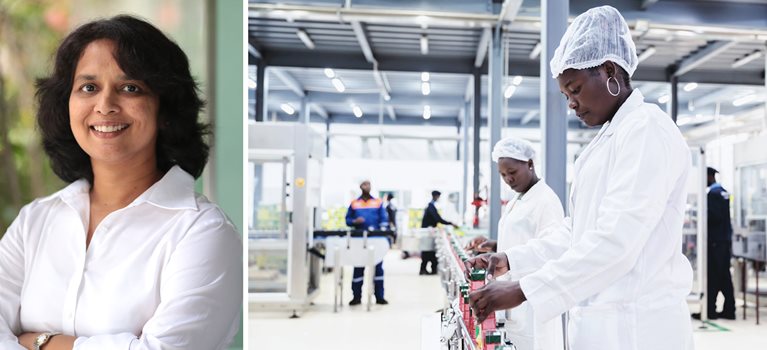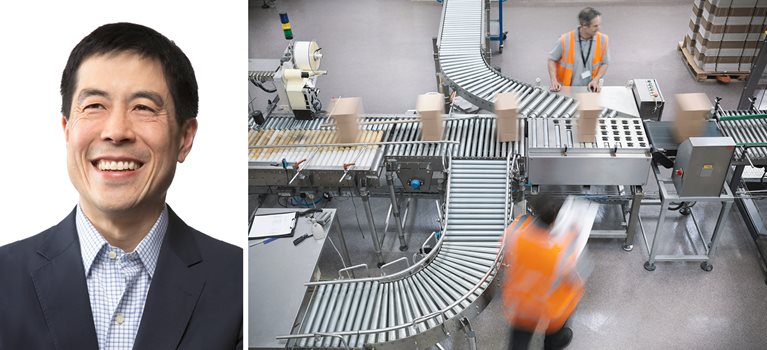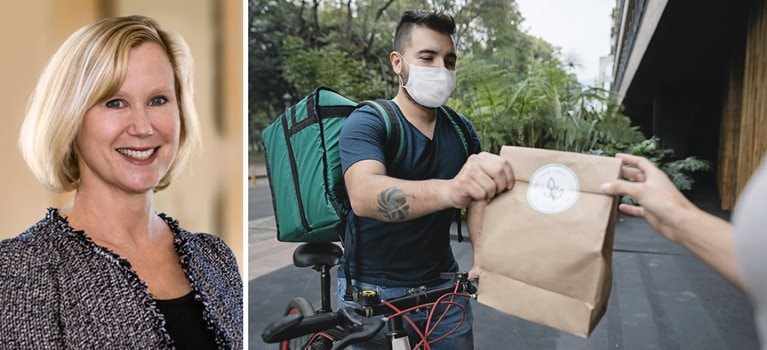In 1990, McKinsey Global Institute (MGI), the business and economics research arm of McKinsey, published its first report about productivity, turning conventional wisdom on its head. The cross-country analysis employed a new method of calculation and included the service sector for the first time. The results surprised experts, showing the U.S. economy to be more competitive than believed.
Thirty years later, MGI is still challenging conventional wisdom. "We try to inspire new thinking about the most pressing issues of the world, with perspectives developed through data, facts, and analysis," says Michael Chui, an MGI partner.
“Increasingly we are looking at the societal issues influential to our core economic work—gender equality, affordable housing, youth unemployment,” explains MGI partner Anu Madgavkar. “These topics need credible, apolitical, data-backed voices—a contribution that we can make.”
As MGI marks its 30th anniversary this month, we asked five leaders to talk about a piece of research that has special meaning to them and how it helped to change thinking on a topic.
“Just one research project? But we love all ‘our children’,” laughed Michael Chui when the question was posed to him. Here are excerpts from those conversations.
Anu Madgavkar on gender equality

I think our power of parity work in 2015 resonated deeply because it brought together the two different worlds of women for the first time: the social world—relating to health, education, care services, political empowerment, and physical security—and their economic world: how they participate in the economy and advance their careers. We created a Gender Parity Index (GPI) with15 indicators that knits together these two worlds and clearly measures the progress, or not, countries are making towards parity.
An important insight was that the two can't be separated—they are intertwined and shape human productivity and growth in profound ways. As a result, we brought together policymakers from the social sector and business leaders for an ongoing dialogue and more holistic understanding of the barriers women face.
Building on this, we recently analyzed COVID-19’s impact on gender equality and found it is translating into millions of women dropping out of the workforce around the world. We need to bring MGI’s fact-based analysis to shed light on critical societal challenges like this one.
Jan Mischke on affordable housing

It was the first time a structured, business logic had been applied to the topic which traditionally had been perceived as a social issue in the domain of NGOs. We also identified four “catalysts” for building developments.
We knew we had hit on something when we began to get a lot of citations in large conferences and because of our exacting, structured approach, the report ended up being a must-read on affordable housing that people could use in very practical ways.
It is always difficult to say what impact our research has but over time we saw a shift in the thinking in a number of countries. Affordable housing changed from being an issue to be solved by increased financing, to being a supply-side issue in which both public and private sectors can play strong roles. This means opening up land, developing supportive government policies, building around transit hubs, and using modern methods to reduce construction costs—to create the types of housing people need.
To date, it has been gratifying to see our affordable housing research inform initiatives in Los Angeles, London, and Singapore, to name a few places.
Jaana Remes on healthcare

We always knew that healthy lifestyles were important, but for the first time this year, we actually quantified the social and economic benefits of what happens when, as a society, you take care of your people.
The first—and very big challenge—is changing the perception of healthcare from being a cost and burden to becoming an investment.
If we use interventions we already know—good nutrition, preventative medicines—combined with a handful of promising medical innovations—we can reduce the cost of managing disease by about 40 percent over the next 20 years.
One surprise we found is that it’s not mostly “old people’ who suffer from ill health; many middle-aged people struggle with diabetes, depression, heart disease. By focusing on preventative care and known disease treatments, the average 65-year-old in 2040 could be as healthy as a 55-year-old today.
What makes me really excited is the thought that we could add 10 years to the active midlife with what we know. Imagine how much quality of life we could all get in that time—contributing to your work, enjoying your family, and doing what you love.
Michael Chui on technology and the future of work

I have looked at the ways that technologies—AI, analytics, robotics, IoT—are influencing the global economy, and I think specifically of our research in how automation will change the future of work. We explored this in many dimensions: by specific jobs and tasks, level of skills, geography, by timeframe.
We heard again and again that people were worried about mass unemployment due to automation: machines will take everyone's jobs.
But, we found, in fact it's rare that an entire job will be automated away. You need to look at the individual activities of each job—and yes some may go away, but other tasks, often more interesting, may evolve with the position. Entirely new jobs and categories will be created. And this doesn’t happen overnight.
Our colleagues have been helping CEOs transition their workforces for the next five to 15 years: What new skills, talents, organizational structures will they need? It has been incredibly rewarding to know our research is being used to reset thinking, reduce anxiety, and manage pragmatically for coming changes.
Susan Lund on jobs and the impact of COVID-19 on lives and livelihoods

Jobs and labor markets were a new topic for MGI that we started following the Great Recession of 2008-2009. It’s the first time we noticed that GDP growth doesn’t always lead to job growth. I led research on the “jobless recovery” and explored why it was taking so long for employment to recover after a recession. It changed the way that business leaders think about jobs because it highlighted the importance of helping people switch occupations and gain new skills throughout their career. More recently, we looked at how automation and AI are transforming work at the local level, and how job growth is increasingly concentrated in a few dynamic cities.
In March of this year, we analyzed the potential job loss in the US and Europe due to COVID-19. We estimated that 1/3 of workforce could be laid off; it seemed outlandishly large at the time. Nine months later, the number of people applying for unemployment was even greater. We wanted to warn policymakers and business leaders how devastating this pandemic would be to workers.
Within days, some industries were shedding entire categories of jobs, while other businesses couldn't hire quickly enough. The challenge of matching large numbers of unemployed workers to new jobs was urgent and we wanted to find a concrete way to help solve this problem we spotlighted. We supported the creation of Talent Exchange,* an AI-based platform that automates job matching; so far 120 companies have registered.
To me our research on jobs and labor markets is really important because it affects individuals. Long-term unemployment is corrosive to our self-worth and linked to illness, divorce, suicide, even scarring the next generation. Much of our work is at the macro level and I love that McKinsey invests in understanding this aspect of the economy that's about individual people.
*Created by Eightfold.ai and the Food Industry Association (FMI)